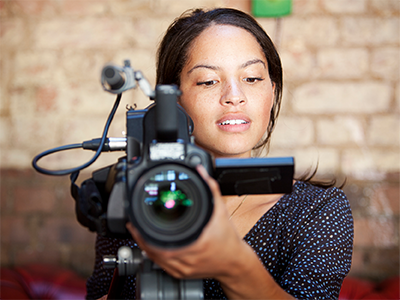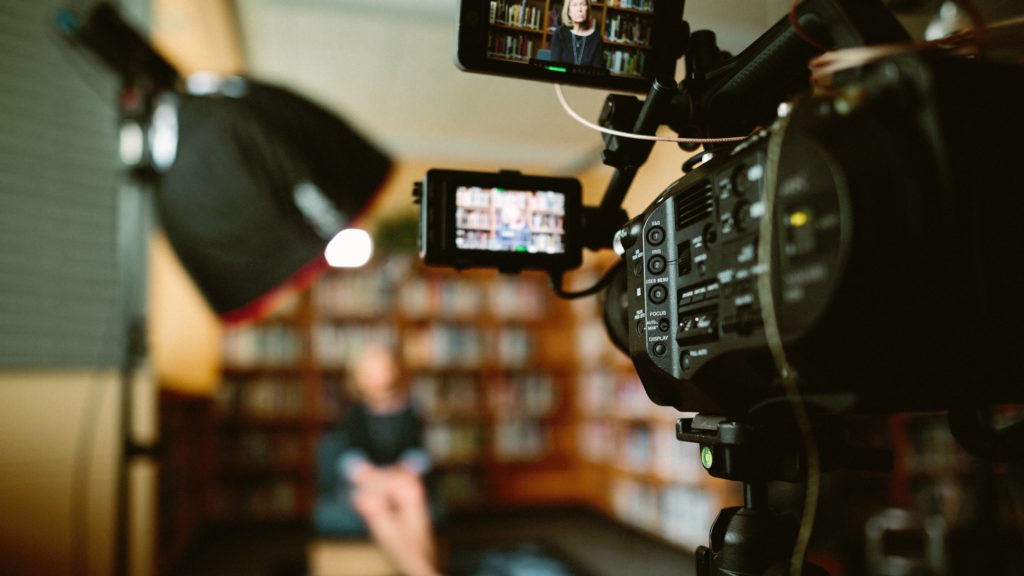Delving Into the Systems of Lawful Videography: Unveiling Its Operation in Safeguarding Authentic Aesthetic Testament for Judicial Process
In the world of judicial proceedings, the function of legal videography stands as a keystone in maintaining and providing aesthetic proof. As innovation continues to development, the systems behind legal videography have come to be significantly complex, using a critical layer of credibility to statements captured on video clip. By diving into the functional details of lawful videography, one can uncover the precise processes that safeguard the honesty of aesthetic evidence presented in courts - Legal Videography. This exploration not just loses light on the historical evolution of lawful videography but additionally means the future trends that might even more revolutionize just how visual testaments are maintained in the realm of justice.
Historic Advancement of Lawful Videography
Analyzing the historic progression of legal videography exposes a significant makeover in the capturing and presentation of aesthetic evidence within the legal landscape. In the past, lawful process greatly counted on written photos and records to document events and supply evidence. However, with the development of video technology, the lawful market experienced a paradigm change in just how visual testament was recorded and presented.
The development of lawful videography can be traced back to the late 20th century when advancements in video recording equipment made it much more easily accessible for usage in courts. This technical improvement not just improved the precision and integrity of aesthetic proof yet also transformed the way instances were offered to courts and judges (Legal Videography). Attorneys started to identify the influential power of video clip recordings in communicating emotions, subtleties, and non-verbal signs that created photographs or transcripts alone could not record properly

Technology Developments in Video Documentation
What vital technological advancements have changed video documents in the legal area? The legal area has actually seen considerable advancements in video clip documentation modern technology that have boosted the credibility and reliability of aesthetic evidence in judicial procedures.
In addition, developments in video clip encryption and watermarking innovations have actually reinforced the security and tamper-proof nature of video proof, guarding it against unapproved changes or tampering. The development of cloud storage space solutions and remote access abilities has streamlined the storage, access, and sharing of video clip proof, promoting seamless collaboration among legal experts and making sure effective accessibility to important aesthetic testaments when required. These technical advancements in video documentation have actually unquestionably reinvented the legal field, enhancing the accuracy, reliability, and admissibility of visual evidence in judicial proceedings.
Duty of Lawful Videographers in Court Settings
The evolution of video documents modern technology in the legal field has actually required a vital function for legal videographers in court settings, ensuring the honesty and integrity of visual testimonies offered throughout judicial procedures. Legal videographers play a fundamental duty in recording and protecting exact visual evidence that can be pivotal in court situations. Their responsibility includes setting up equipment, taping proceedings, and generating high-grade videos that properly show the events in the court.
In courtroom setups, lawful videographers should follow strict standards and standards to preserve the credibility of the visual document. They should have a keen eye for information and a Full Report complete understanding of lawful treatments to make sure that the footage they record is a real depiction of the events that transpired. In addition, legal videographers commonly function closely with lawful groups to ensure that the video clip proof aligns with the situation's needs and can be effectively provided in court to sustain the lawful arguments being made. In general, the duty of lawful videographers in courtroom settings is indispensable in maintaining the concepts of justice and guaranteeing the openness of lawful process.

Ensuring Admissibility and Stability of Video Evidence
To preserve the reliability of aesthetic proof presented in legal procedures, making certain the admissibility and integrity of video proof is a critical obligation for lawful videographers. Admissibility describes the look at these guys approval of proof by the court, and for video clip evidence to be admissible, it needs to fulfill particular standards. Lawful videographers play an essential function in making sure that the video clips they record adhere to the guidelines of evidence, such as authenticity, significance, and dependability.
Stability of video clip proof involves preserving the creativity and precision of the video from the time it is tape-recorded up until it exists in court. This consists of securely saving the video clip documents, recording the chain of guardianship, and avoiding any type of tampering or modifications. Legal videographers must follow strict protocols to guarantee the honesty of the video clip evidence and stop any type of difficulties to its authenticity.
Future Trends in Legal Videography
Offered the raising dependence on innovation in legal process, legal videographers are poised to welcome ingenious improvements shaping the future of aesthetic statement capture and presentation. Among the famous trends coming up is the combination of virtual fact (VR) and augmented fact (AR) innovations into lawful videography. These innovations have the prospective to reinvent how aesthetic evidence is presented in courtrooms, enabling courts and judges to submerse themselves in the scene of the criminal offense or incident.
Moreover, making use of expert system (AI) formulas for video evaluation is expected to simplify the process of assessing and examining large quantities of video footage. AI can aid in determining vital minutes, anomalies, and patterns within videos, enhancing the performance of lawful examinations.

Verdict
To conclude, legal videography has played an essential duty in offering genuine visual proof for judicial proceedings. With technical Read Full Article developments and the proficiency of lawful videographers, the integrity and admissibility of video proof are ensured in court setups. As legal videography remains to evolve, it will be vital to support criteria that maintain the accuracy and dependability of aesthetic testimony for the future of legal procedures.
Examining the historical progression of lawful videography discloses a significant improvement in the recording and presentation of visual evidence within the lawful landscape.The evolution of video paperwork modern technology in the legal field has actually necessitated a critical role for legal videographers in court room setups, ensuring the integrity and dependability of aesthetic testaments presented during judicial procedures. Furthermore, lawful videographers often work very closely with lawful groups to ensure that the video evidence aligns with the situation's demands and can be efficiently provided in court to sustain the lawful debates being made.To maintain the integrity of aesthetic evidence provided in legal proceedings, ensuring the admissibility and integrity of video clip proof is a critical duty for lawful videographers. As lawful videography continues to develop, it will be important to copyright standards that maintain the precision and integrity of aesthetic testament for the future of lawful process.